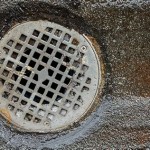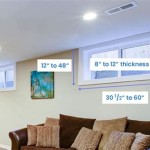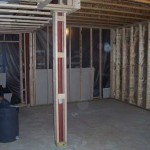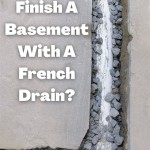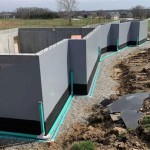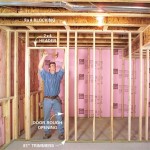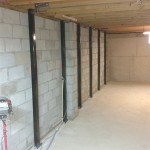Can Wet Basement Carpet Be Saved? Navigating the Aftermath of Water Intrusion
Water intrusion in basements is a common problem, particularly after heavy rainfall, plumbing leaks, or foundation issues. One of the immediate consequences is often wet carpet. The question of whether wet basement carpet can be salvaged is complex and depends on several factors, including the source of the water, the extent of the saturation, the type of carpet and padding, and the length of time the carpet has been wet. A comprehensive assessment is crucial to determine the viability of restoration versus replacement.
The immediate response to a wet basement is paramount. Time is of the essence in mitigating damage and preventing the growth of mold and mildew. Delaying action can significantly reduce the chances of saving the carpet and lead to more extensive and costly problems in the long run.
The Source and Type of Water: A Critical Distinction
The category of water that has saturated the carpet is a critical factor in determining the potential for restoration. Water is typically classified into three categories: clean water, grey water, and black water. Clean water originates from sources such as rainwater, a broken water supply line, or an overflowing sink before it’s become contaminated. Grey water contains some degree of contamination and may come from sources like dishwashers, washing machines, or toilet overflows (without sewage). Black water is grossly contaminated and contains pathogens, originating from sewage backups, floodwater from rivers or streams, or standing water with prolonged exposure to unsanitary conditions.
Carpet saturated with clean water has the highest probability of being saved, provided that it is addressed promptly and dried thoroughly. Grey water presents a greater challenge due to the potential for bacterial growth and the risk of lingering odors. Black water-contaminated carpet is generally considered non-salvageable. The health risks associated with black water are significant, and even with extensive cleaning and disinfection, the risk of residual contamination remains too high. In such cases, professional remediation is absolutely necessary, including the removal and proper disposal of the carpet and padding.
The type of water affects not only the immediate health risks but also the long-term potential for mold growth and structural damage. Clean water, if left unaddressed, can eventually lead to mold growth. Grey and black water, however, introduce contaminants that can accelerate the growth of harmful microorganisms and compromise indoor air quality.
Assessing the Extent of Saturation and Damage
A thorough assessment of the carpet's saturation level is necessary to determine the resources needed for drying and restoration. A lightly damp carpet may be salvageable with professional cleaning and drying equipment. However, if water has seeped deep into the padding and subfloor, a more intensive approach will be required.
The extent of the water damage also impacts the structural integrity of the carpet and padding. Prolonged exposure to water can cause the carpet fibers to degrade, leading to discoloration, shrinkage, and a loss of texture. The padding is particularly susceptible to damage, as it can act as a sponge, retaining moisture and providing an ideal environment for mold growth. In some cases, the padding may be so saturated and damaged that it cannot be effectively cleaned and dried and must be replaced.
The subfloor beneath the carpet must also be inspected for water damage. If the subfloor is made of wood, it can warp, rot, and develop mold if exposed to prolonged moisture. Concrete subfloors, while less susceptible to structural damage, can still be affected by moisture, leading to efflorescence (a white, powdery deposit) and contributing to high humidity levels in the basement.
Visual inspection is a starting point, but moisture meters are essential tools for accurately assessing the extent of saturation. These devices can measure the moisture content of the carpet, padding, and subfloor, providing valuable information for determining the appropriate drying strategy. Infrared cameras can also be utilized to detect hidden moisture behind walls and in other inaccessible areas.
The Drying Process: Speed and Method
Once the category of water and the extent of damage have been assessed, the drying process must be initiated as quickly as possible. Rapid drying is critical to prevent or minimize mold growth and further deterioration of the carpet and padding.
The drying process typically involves a combination of water extraction, air circulation, and dehumidification. Water extraction involves using specialized equipment, such as wet/dry vacuums or truck-mounted extraction units, to remove as much water as possible from the carpet and padding. This step is crucial for reducing drying time and preventing mold growth.
Air circulation is achieved through the use of high-velocity air movers, which create airflow across the surface of the carpet and padding, promoting evaporation. These air movers should be strategically placed to maximize airflow and ensure that all areas of the carpet are adequately ventilated.
Dehumidification is essential for removing moisture from the air, preventing it from being reabsorbed by the carpet and padding. Dehumidifiers work by drawing in moist air, removing the moisture, and then releasing dry air back into the environment. Selecting the appropriate size and type of dehumidifier is important for achieving optimal drying results.
The drying process should be monitored closely, with regular moisture readings taken to track progress. The goal is to reduce the moisture content of the carpet, padding, and subfloor to acceptable levels, typically below 16-18%. The drying time will vary depending on the extent of saturation, the type of materials, and the ambient temperature and humidity levels.
In addition to professional equipment, some steps can be taken to assist in the drying process, such as opening windows and doors to increase ventilation (weather permitting), removing furniture from the affected area, and using fans to circulate air. However, relying solely on these methods is unlikely to be sufficient for thoroughly drying wet basement carpet, especially in cases of significant water damage.
Even with professional drying, the carpet might still require cleaning and disinfecting. This step removes any remaining contaminants and helps to prevent the growth of mold and mildew. Antimicrobial treatments can also be applied to further inhibit microbial growth.
The decision of whether to attempt to save wet basement carpet requires careful consideration of several factors. While it may be tempting to try to salvage the carpet to save money, it is important to weigh the risks and benefits carefully. In cases of significant water damage or contamination, replacement may be the more prudent and cost-effective option in the long run, ensuring a healthy and safe indoor environment.

Can You Save Carpet After A Flood Constructeam

How To Dry Wet Carpet In A Basement Drying Flooded Carpeting

Can You Save Carpet After A Flood Constructeam

How To Dry Wet Carpet In A Basement Drying Flooded Carpeting

How To Dry Out Basement Carpeting Diy Family Handyman

Dealing With Basement Water Damage After Flooding To Avoid Mold Mildew Just Plain Cooking

How To Dry A Wet Fitted Basement Carpet With Little Effort Youtube

How To Dry Wet Carpet

Here S What To Do With Your Carpets After A Flood

How To Remove Wet Carpet In Basement Youtube
